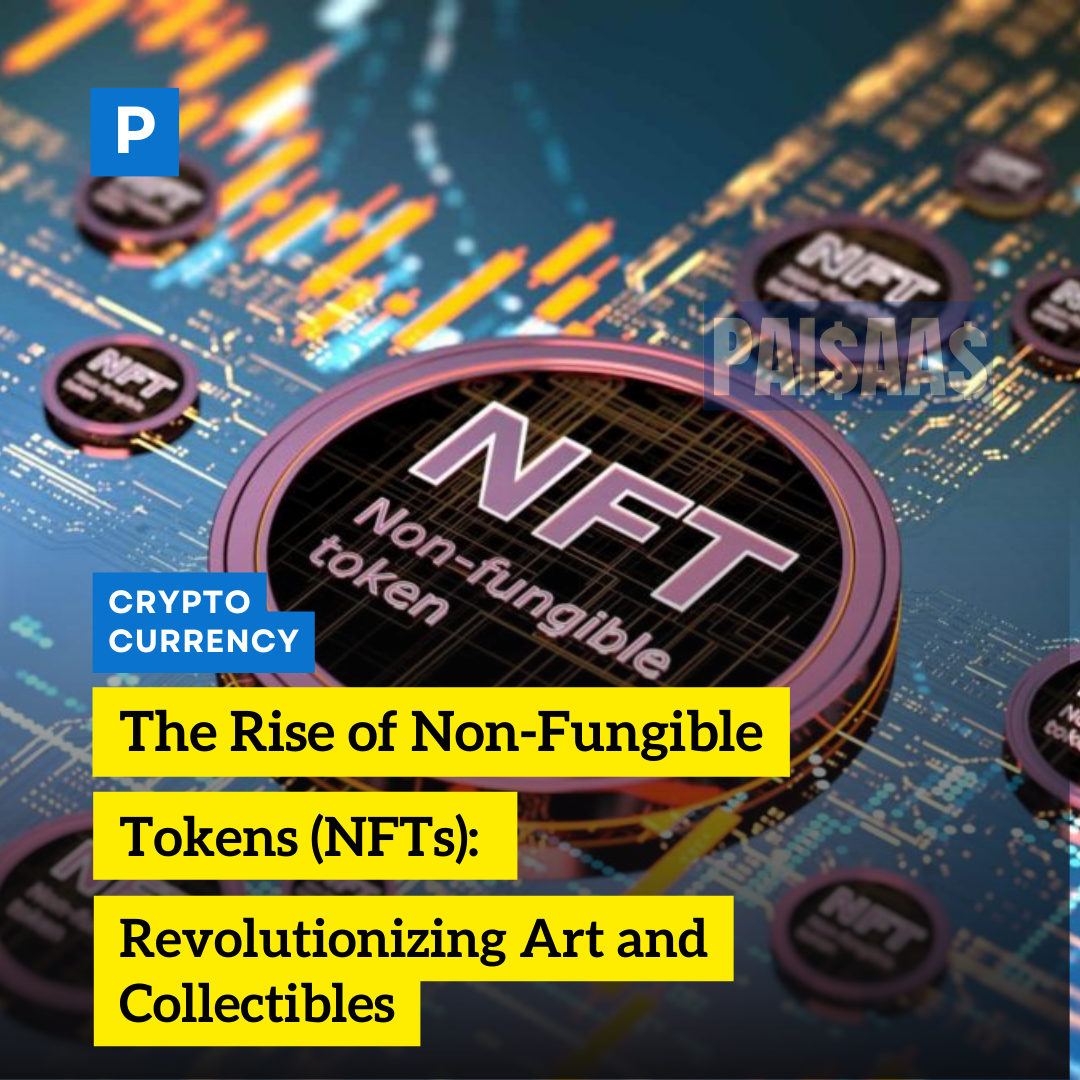

“The Rise of Non-Fungible Tokens (NFTs): Revolutionizing Art and Collectibles
“The Rise of Non-Fungible Tokens (NFTs): Revolutionizing Art and Collectibles
Non-Fungible Tokens (NFTs) have emerged as a groundbreaking phenomenon, revolutionizing the world of art and collectibles. With their unique properties and the power of blockchain technology, NFTs have captured the attention of artists, collectors, and enthusiasts around the globe. In this article, we will delve into the concept of NFTs, explore their diverse uses, and examine the profound impact they have had on the art market and collectibles industry.
At its core, an NFT is a digital asset that represents ownership or proof of authenticity of a unique item or piece of content. Unlike cryptocurrencies such as Bitcoin or Ethereum, which are fungible and can be exchanged on a one-to-one basis, NFTs are indivisible and cannot be replicated. This uniqueness is achieved through blockchain technology, which provides a decentralized and transparent ledger to verify ownership and transaction history.
In the realm of art, NFTs have opened up new possibilities for creators and consumers alike. Digital artists can tokenize their work, transforming intangible creations into scarce and tradable assets. These digital artworks can encompass various forms, from illustrations and animations to music and virtual reality experiences. By tokenizing their art, artists can establish proof of ownership and control, ensuring that their creations cannot be reproduced without their consent.
One significant advantage of NFTs in the art world is the implementation of smart contracts, which enable artists to receive royalties whenever their works are sold or resold. Unlike traditional art markets, where artists often don’t benefit from the appreciation in value of their work, NFTs empower creators by ensuring that they receive a percentage of subsequent sales.
This newfound revenue stream has the potential to revolutionize the livelihoods of artists, allowing them to sustain their practice and invest in future creations.
NFTs also address long-standing challenges in the art market, such as authenticity and provenance. With traditional art, determining the authenticity and ownership history of a piece can be a complex and subjective process. However, with NFTs, these concerns are mitigated as the blockchain provides an immutable record of ownership and a transparent trail of transactions. Collectors can have confidence in the authenticity of their acquisitions, and artists can ensure their works are properly credited and protected from counterfeit reproductions.
Beyond the world of art,
NFTs have made a significant impact on the collectibles market. From virtual assets in video games to limited-edition digital items, NFTs have transformed the way people engage with and collect their favorite things. In virtual worlds, NFTs enable players to truly own and trade their in-game items, fostering a sense of value and rarity within these immersive environments.
Collectibles such as trading cards, digital fashion items, and virtual real estate have all found a new market through NFTs, attracting collectors and enthusiasts who appreciate the uniqueness and scarcity that these tokens represent.
The integration of NFTs with collectibles has also brought an element of gamification and interactivity. Some NFTs come with additional utility or functionality, allowing owners to unlock special features or experiences.
This interactive element enhances the overall collectible experience, giving collectors a sense of participation and enjoyment beyond the mere ownership of an item. It blurs the lines between the digital and physical realms, introducing a new dimension of engagement and personalization.
The impact of NFTs on the world of art and collectibles cannot be understated. They have democratized access to art by removing intermediaries and allowing artists to connect directly with their audience. The traditional barriers of entry, such as gallery representation or approval from gatekeepers, have been circumvented, enabling artists from diverse backgrounds to showcase their work and gain recognition.
Moreover
NFTs have reinvented the art market by creating new dynamics and disrupting established models. They have introduced a direct peer-to-peer marketplace where buyers and sellers can interact without the need for intermediaries. This decentralized approach has democratized the art market and given rise to new platforms and communities that cater to the growing demand for NFTs.
While NFTs have brought numerous opportunities, they also pose challenges and concerns. Environmental impact, copyright infringement, and market speculation are just a few areas that require careful consideration and responsible development. Addressing these issues will be crucial in ensuring the long-term sustainability and ethical growth of the NFT ecosystem.
Conclusion
In conclusion, NFTs have emerged as a transformative force in the world of art and collectibles. With their ability to establish verifiable ownership, enable new monetization models, and foster creative expression, NFTs have unlocked unprecedented possibilities. As the technology continues to evolve and mature, it is essential for all stakeholders to navigate the complexities and address the challenges associated with NFTs to ensure a vibrant and inclusive future for this revolutionary concept.




